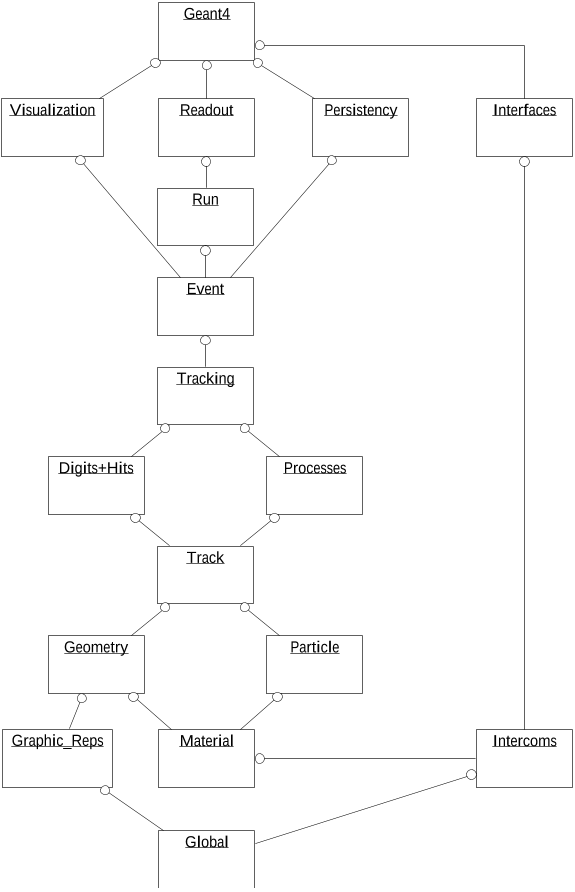




read more







![Fig. 5. Multiple scattering of 6:56 MeV protons by 92:6 mm of silicon: the angular distribution of exiting protons. Comparison of Geant4, GEANT3 and data from [55]: G3 and G4 results are nearly identical, except at small angle.](/figures/fig-5-multiple-scattering-of-6-56-mev-protons-by-92-6-mm-of-1mn4fyfj.png)
![Fig. 6. Radial shower profile of E0 ¼ 1 GeV pencil electron beam in a cylinder of water, length 10 radiation lengths, radius 0.7 radiation lengths. The radial profile is the relative energy deposited per radiation length of radius. The cumulative profile is the energy deposited within a cylinder of given radius (the binning is 0.1 radiation lengths). Comparisons of Geant4, GEANT3 and measurements are from [56]. G3 and G4 results are nearly identical.](/figures/fig-6-radial-shower-profile-of-e0-1-4-1-gev-pencil-electron-r860upyt.png)

![Fig. 11. Comparison of the branchings in two particle final states in proton anti-proton annihilation [100] with the predictions of CHIPS.](/figures/fig-11-comparison-of-the-branchings-in-two-particle-final-2l0qtzql.png)
The implementation of the toolkit in an object-oriented design allows it to be easily extended, where appropriate, to meet the requirements of the user, through class inheritance.
Although unit and system testing are critical to ensure integrity and correctness of the Geant4 code, it is also important to monitor code quality from the start.
The intercoms category implements an expandable command interpreter which is the key mechanism in Geant4 for realising customisable and state-dependent user interactions with all categories without being perturbed by the dependencies among classes.
The key domains of the simulation of the passage of particles through matter are:* geometry and materials; * particle interaction in matter; * tracking management; * digitisation and hit management; * event and track management; * visualisation and visualisation framework; * user interface.
The use of state of the art software technology is the key that allows for distributed development of the physics base of a tool-kit for simulation of hadronic physics in the Geant4 context.
The need to suspend the primary charged particle track arises in the production of Cherenkov photons because the number of such photons generated during the length of a typical step, as defined by energy loss or multiplescattering, is often very large.
The basic requirements on the physics modelling of hadronic interactions in a simulation toolkit span more than 15 orders of magnitude in energy.
It takes cares of all message passing between objects in the different categories which are relevant to transporting a particle (for example, geometry, interactions in matter, etc.).
The demand is driven by the escalating size, complexity, and sensitivity of the detectors and fueled by the availability of moderate-cost, high-capacity computer systems on which larger and more complex simulations become possible.
A systematic error of 15% was added to the simulation results to take the error in the extrapolation of the total cross-sections into account.
The range for other charged hadrons is computed from the proton table by using the scaled kinetic energy Ts ¼ Tmp=m; where T is the particle kinetic energy, m is the particle mass and mp is the proton mass, which is the energy of a proton with the same velocity as the tracked particle.
Data driven modeling is known to provide the best, if not only, approach to low energy neutron transport for radiation studies in large detectors.
To achieve this end the authors employ various Quality Assurance tools such as CodeWizard [43], to detect unsafe, nonstandard or errorprone coding practices in the source code, Insure++ [43] and Valgrind [44], to detect data integrity and memory management problems in a running application.
The Geant4 toolkit contains a large variety of complementary and sometimes alternative physics models covering the physics of photons, electrons, muons, hadrons and ions from 250 eV up to several PeV.